Autism self-advocate Marcelle Ciampi, M.Ed. (aka Samantha Craft) reflects on her challenges with object permanence and chronic pain.
More can be found here: Read More
Autism self-advocate Marcelle Ciampi, M.Ed. (aka Samantha Craft) reflects on her challenges with object permanence and chronic pain.
More can be found here: Read More
 Obsessive-compulsive disorder (OCD) in children is neither uncommon nor well understood. Even some medical professionals think OCD is about rigorous hand-scrubbing or similar ritualized behaviors. It is often much stealthier — especially in kids who also have ADHD.
Obsessive-compulsive disorder (OCD) in children is neither uncommon nor well understood. Even some medical professionals think OCD is about rigorous hand-scrubbing or similar ritualized behaviors. It is often much stealthier — especially in kids who also have ADHD.
OCD is relatively more common in youth with ADHD. The disorders affect the same part of the brain and have many overlapping symptoms, including problems with attention, planning, task switching, and impulsivity. For this reason, OCD is sometimes misdiagnosed as ADHD or missed altogether when ADHD is present.
A missed OCD diagnosis is problematic because the condition informs the medication your child is prescribed, the treatment you pursue, and the therapist you choose. It influences the way you respond to your child’s behavioral challenges and the school accommodations you request.
We’ve all heard “I’m so OCD” from someone who is extremely neat and organized, but this stereotype does not generally reflect the reality of the OCD experience. Only a portion of people with OCD have germ or contamination obsessions. Misleading stereotypes like this mean OCD symptoms often go unrecognized in kids. Parents frequently ask, “How could my child have OCD? Their room is a mess.”
[Get This Free Download: Is It OCD or ADHD?]
The most common OCD themes in children include:
OCD often shows up in the following behaviors or as the following phobias among children who also have ADHD:
[Read: OCD and ADHD – The Polar Opposites That Are Not]
OCD symptoms can range from burdensome to debilitating, but a large body of research has revealed effective treatment approaches. They include:
These OCD medications may be used in conjunction with ADHD medications, including stimulants. For some people, though, stimulants can increase OCD symptoms and/or BFRBs, so It’s important to be treated by a provider who is knowledgeable about both OCD and ADHD.
SUPPORT ADDITUDE
Thank you for reading ADDitude. To support our mission of providing ADHD education and support, please consider subscribing. Your readership and support help make our content and outreach possible. Thank you.
Q: “My 16-year-old son socializes through gaming and refuses to make any effort to develop friendships in real life. When I bring up the subject, he flies off the handle. How can I help my struggling teen?”
 Friendships seldom spark or endure easily for boys with ADHD, who may avoid or sabotage real-life friendships due to weak social executive functioning (SEF) skills related to cognitive flexibility and situational awareness. Social anxiety is also prevalent among some teens with ADHD, yet many are unable to articulate this difficulty, which can lead teen boys to retreat into online worlds and video games.
Friendships seldom spark or endure easily for boys with ADHD, who may avoid or sabotage real-life friendships due to weak social executive functioning (SEF) skills related to cognitive flexibility and situational awareness. Social anxiety is also prevalent among some teens with ADHD, yet many are unable to articulate this difficulty, which can lead teen boys to retreat into online worlds and video games.
Improve your teen’s SEF skills by helping them to:
[Could My Child Have Social Anxiety? Take This Self-Test]
Social anxiety is common among teen boys. Easing their discomfort around social situations will help them move away from screens and build offline friendships. Here are some approaches to try.
Ryan Wexelblatt, LCSW, is a licensed clinical social worker and father to a son with ADHD and learning differences. He creates content for the ADHD Dude YouTube channel.
SUPPORT ADDITUDE
Thank you for reading ADDitude. To support our mission of providing ADHD education and support, please consider subscribing. Your readership and support help make our content and outreach possible. Thank you.
U.S. Senator Tommy Tuberville (R-Ala.), during a confirmation hearing for Health and Human Services Director nominee Robert F. Kennedy, Jr., last week said this: “We have an attention deficit problem in this country… When you and I were growing up, our parents didn’t use a drug, they used a belt and whipped our butt… Nowadays, we give them Adderall and Ritalin. They are like candy across college and high school campuses.”
Kennedy, in his response to Tuberville, falsely claimed that 15% of American children are taking Adderall or other ADHD medications, and that the U.S. is “overmedicating our children” with stimulants, SSRIs, and benzodiazepines for mental health conditions. This juxtaposition — criticizing the American pharmaceutical industry after suggesting corporal punishment as a healthier alternative — struck many in the ADHD community as toxic and dangerous.
The American Psychological Association (APA) passed a resolution in 2019 urging against physical discipline for children, citing research demonstrating that corporal punishment harms children’s mental health and increases the likelihood of aggressive behavior in the future. “Use of physical discipline predicts increases — not decreases — in children’s behavior problems over time,” the resolution said.
The clinical practice guidelines developed by the American Academy of Child and Adolescent Psychiatry (AACAP) recommend medication as the first-line treatment for ADHD in school-age children, citing a formal review of 78 studies on the treatment of ADHD, which “consistently supported the superiority of stimulant over the non-drug treatment.”
Tuberville’s comment comes just days after an interview with Nicole Shanahan, an attorney and Kennedy’s former 2024 running mate, in which he blamed mental health medications for a rise in American school shootings, despite a lack of research backing this claim.
“The effects of ADHD crush families, multiply health burdens, sap worker productivity, and increase penal system costs,” said Oren Mason, M.D., a family physician in Grand Rapids, Michigan, and author of Reaching for a New Potential, in response to Kennedy’s statement at the confirmation hearing. “Life is remarkably harder with autism and depression, and every bit of support is welcome. People with ADHD and similar mental health challenges need affordable and available medications, psychosocial support, and education/work modifications. Parents need evidence-based guidance and training opportunities and respite. Teachers need evidence-based methodologies and the time to implement them. Therapists and coaches need training in the most beneficial interventions. Scientists and researchers need funding and priority-setting leadership. As Secretary of HHS, this is what I will provide the people of our great nation.”
“This is what RFK, Jr., might have said if he was familiar with the far-reaching complexities of providing hope and care for those with mental health challenges,” Mason continued. “Instead, he chose an Internet-chatter meme to spotlight his grasp of the needs of almost 30 million Americans with a complex disability. The mortality rate of ADHD is higher than asthma and nearly that of heart disease. If he was trying to signal that his approach to America’s mental health will be heartless and evidence-free, he nailed it.”
Many people took to BlueSky to respond to Tuberville’s and Kennedy’s comments at the confirmation hearing and to reflect on their own experiences with physical discipline as children with ADHD. Here are comments posted to BlueSky late last week during the confirmation hearings:
“Child abuse is a serious problem in this country and NOT a treatment for ADHD. In fact there is an association between ADHD and being a victim of abuse.” — @trm99.bsky.social
“We did get punished in every way, from spankings to standing in the corner at school for having (what we later learned) was ADHD. I was told how disappointing I was, how it was a shame that I had poor self-control since I was so smart, etc.” — @ritamelindared.bsky.social
“The belt/strap never helped my ADHD just made me angrier and more rebellious!” — @ginakh.bsky.social
“Late diagnosis and therapy ended decades of self-loathing no doubt brought about by teachers and other adults who berated me as a kid.” — @mexhistorian.bsky.social
[Read: Does Trauma Cause ADHD? And Vice Versa?]
“As a 65 year old with ADHD (and I had it as a child) I can attest that THE BELT was not the way to handle things. I’m still traumatized.” — @veryvaluable.bsky.social
“I was diagnosed when I was 41; my brother was 6. He was treated very differently and far less violently than I was and is doing well.” — @atticusdogsbody.bsky.social
“My mom used a belt, and her hands, and The Denver Post, and wooden spoons, etc… and I still have ADHD and also CPTSD.” — @quickbeam711.bsky.social
“Beating your child was never a treatment for ADHD. It was and always will be abuse.” — @ pednspy.bsky.social
“ADHD is an actual condition, and you can’t beat it out of a child.” — @ nrvschultz.bsky.social
“The belt doesn’t cure ADHD.” — @davidcouldbewrong.bsky.social
“As a parent watching a 4-year-old kid and wondering if he has ADHD, my first and only concern is making sure he had tools to succeed, not that we beat it out of him or hide it due to stigma.” — @ viamarsala18.bsky.social
These comments shed light on the need for proper treatment to combat the shame and stigma that tend to come with an ADHD diagnosis.
SUPPORT ADDITUDE
Thank you for reading ADDitude. To support our mission of providing ADHD education and support, please consider subscribing. Your readership and support help make our content and outreach possible. Thank you.
 The capacity to hope is a powerful predictor of wellbeing. Scientific research shows that hope improves emotional regulation, pain tolerance, coping strategies, and self-esteem. It reduces depression and anxiety, and it can shape positive outcomes.
The capacity to hope is a powerful predictor of wellbeing. Scientific research shows that hope improves emotional regulation, pain tolerance, coping strategies, and self-esteem. It reduces depression and anxiety, and it can shape positive outcomes.
Hope is believing that a positive future is possible and trusting in your ability to achieve it. Hope provides a structured approach for setting goals and taking steps to achieve the future you desire, rather than simply contemplating it.
Experiencing hard times reduces an individual’s capacity for hope, but here’s the good part: Hope itself is a protective factor against adversity. Also, hope and resilience can be nurtured, taught, and restored.
Hope comprises three parts:
[Read: The Mystery of ADHD Motivation, Solved]
Hope can be taught in incremental steps. You can expand your capacity for hope and strive for a better future, even in the face of apathy and despair.
[Read: Intention Deficit Disorder – Why ADHD Minds Struggle to Meet Goals]
What happens when the issues we face seem beyond our control? The last several years have brought a deadly pandemic, a deepening political divide, global conflict, and climate changes that produced life-threatening weather patterns. In the midst of such adversity, it is easy to slip into despair.
In these moments, hope is not the light at the end of the tunnel; hope is the light we need in the tunnel. During times of extreme hardship, we keep our focus on very short-term (perhaps daily) goals, where we have some degree of control in our pathways.
Brené Brown recently referred to these as microdoses of hope. Focus on the priority areas of your life: family, work, leisure, and community. Our research shows that short-term, specific goals are a better protector of hope and predictor of goal achievement during times of adversity. Once you identify a short-term goal, take a moment and think about a time when you achieved something that made you proud. What barriers did you face and how did you overcome them? Remember, you have done hard things.
Hope begets hope. Making progress toward your goals will increase your confidence and belief that the future is yours for the taking.
Chan M. Hellman, Ph.D., is a professor at the University of Oklahoma and director of The Hope Research Center. His research focuses on helping children and adults overcome trauma and adversity.
SUPPORT ADDITUDE
Thank you for reading ADDitude. To support our mission of providing ADHD education and support, please consider subscribing. Your readership and support help make our content and outreach possible. Thank you.
From sorting piles of mail to folding last week’s laundry, some lingering tasks require more time and motivation than our ADHD brains can reliably muster. Our to-do lists may never be fully liberated from these onerous tasks, but we can free ourselves from the negative self-talk and shame that result from our avoidance and procrastination.
ADDitude recently asked 389 readers how they move forward when faced with a list of tiresome projects, tasks, and chores. The majority (68%) said it depends on the day, the tasks, or their mood, while 25% said they pluck the “low-hanging fruit” and do the easiest items first. Only 7% said they “eat the frog,” tackling their hardest, most unpleasant tasks first.
Here, ADDitude readers share more real-world strategies for getting things done — and treating themselves with kindness when they don’t.
How do you manage shame when faced with unfinished responsibilities? Share your experience in the Comments section below.
“I wait for the ‘brain goblin’ to unlock the door in my brain that allows me to do the task. I never know when he’ll decide to open the door, but I know I have to drop everything and do the task immediately when he does.” — Ashley, Ohio
“Tuning into my body helps me make wiser decisions about how to proceed with my daily to-dos. If I need to prioritize rest, I honor that feeling instead of beating myself up over it. I find that I am more productive afterward.” – Laurie, New York
[Get This Free Download: Stop Procrastinating… Now!]
“When I am particularly low energy or distractable, I try to ‘eat the frog.’ Otherwise, I won’t get it done. If I’m more energetic, I will often do the ‘low-hanging fruit’ to build momentum and capitalize on my hyperfocus.” – Anonymous
“I determine the most manageable task based on the day, my mood, and my dopamine stores. I also lie profusely to myself about what is actually achievable in a certain amount of time and get started.” – Kelsey, Pennsylvania
“It’s all about dopamine, reward, motivation, and stimulant meds. By starting with the most rewarding task, I enhance my adrenaline and dopamine inflow, which helps me accomplish more rewardless, necessary tasks.”— Anonymous
“On difficult days, I create a ‘done’ list at the end of the day. It includes finished items that weren’t on my to-do list, so I don’t feel defeated by a lack of progress.” – Beth, New Hampshire
[Read: How to Get Things Done Without Getting Bogged Down]
“I find it motivating to have specific things to mark off. If I’m feeling robust, I start with the hardest things. Or I’ll work on my emails to warm up and then get down to business.” – Elisabeth, Indiana
“I decide on a reward for myself when finishing a task. For example, after I get X done, I can watch a movie or an episode of a T.V. show.” – Brittany, Texas
“On a bad day, I’ll add easier things to my to-do list to ‘feel’ productive. I can cross the easy things off first, which motivates me to tackle harder tasks.” – Monica, Ohio
“I remind myself to do just one thing on my to-do list. This way, I can get 10 things done in 10 days rather than 0 in 10 days. Realistically, I won’t accomplish 10 things in 10 days, but thinking like this makes tasks feel more doable, and I will get more done.” – Tara, Minnesota
SUPPORT ADDITUDE
Thank you for reading ADDitude. To support our mission of providing ADHD education and support, please consider subscribing. Your readership and support help make our content and outreach possible. Thank you.

I have a strong preference for independent work tasks in the classroom. I thoroughly enjoy the process of creating them, utilizing them, instructing students on how to use them, and witnessing the transition from dependence to independence. Numerous educators are interested in incorporating a work task system into their classroom but lack guidance on how to begin. It is worth noting that both my lowest and highest-performing students are capable of developing independent stamina.
The best thing you can do is start small and remember that everything takes time. Identify the specific skills or concepts you want students to practice independently. Create materials or tasks that align with those objectives. Consider using a variety of formats such as worksheets, interactive digital activities, or hands-on manipulatives. Provide clear instructions and model the task if necessary. Gradually increase the complexity of the tasks as students become more proficient. Monitor and assess student progress regularly to ensure they are mastering the skills.

Here is a list of materials that I would suggest you start with for the basic setup for independent work tasks:

I introduce this concept at the beginning of the school year, but it can be implemented at any time. In a whole group lesson, I explain the concept of independence. It is important to model the process and guide the students through the task. I usually repeat this lesson multiple times over at least a week, depending on the students. At the primary level, you may need to extend the duration. If there is a student who is struggling, consider providing individual instruction.
This includes showing the students sitting at the area where they will work, picking up the label, walk it to the area where the work tasks are, matching the label, grabbing the box, and bringing it to the table, then sitting at the table and completing the task. Then I also show where to put the box when it’s complete and how to move onto the next task. I try not to assume that my students (and sometimes my staff) know ANYTHING about this process. It is so much easier to teach it this way first, then have to go back and redo it.
We actually practice this at first with NOTHING in the bins and go through the motions of all those steps first, and I work on determining what my students can do independently before filling the bins with anything.
The best way to know if a student can do something independently is to have them try it. I don’t like to assume that a student can do a task even if they have done one similar before. I will usually have them do it with me in a one-on-one situation or have a paraprofessional do it with a student and take notes.
At the beginning of the school year, I find it easiest to have all my students sit at a table and have a stack of 10-20 bins and hand the students bins and take notes on if they can do it or not, I have my paras take notes and we can all put eyes on the students at the same time. If you are in the middle of the school year and have stations already set up, I don’t suggest messing with your students’ schedule, just work with them one-on-one.
This question I get asked all the time and my best answer are to use Put-In tasks. You can read a blog post that I wrote about them here: Put-In Tasks for ANY Classroom
Some of your students just cannot work by themselves that is OKAY! You will get there and now you have found a great goal for your students to work on. I will then have my paraprofessional do two different things.
If the student can’t sit by themselves and can’t do the task then it becomes some of the work that my para does with that student during their 1:1 instruction time. I have it built into the schedule that every student works with every para in my room 1:1 at least once a day.
If the student can sit by themselves then I have the para use most to least prompting to build their independence while working at their seat. We take data via. a task-analysis sheet (more on that in the next question) and we try to look for progress in using less prompting over time until the student becomes independent. The goal is eventually the para doesn’t need to be there. Here is an example of a prompting chart that is all over my classroom for my paras to reference!
We create a goal for it! I know that we all have different expectations for IEP goals. I have found that many districts want behavior goals and this is a great way to target “on-task behavior” in the classroom. So I will use it as a behavior goal, functional independence, or life skills goal. Here are some suggestions for goals that I like:
Of course! Especially if it is for an IEP goal but, even if not, it is great information and such crucial skills for students to learn. I often will create a task-analysis of the work task process as I described above. If I just want data on one task I create a task analysis on just the parts of that task specifically.
Here are some materials that I have that filled my task boxes for my students to work on. If you click on the images below it will take you to the products to learn more!
I know we all don’t have a wallet the size of Texas! We wish we could get all the items to work with all the students in our classroom. It can be hard just starting out and not knowing what to use. I have created some freebies that you can access by signing up below and get them in your inbox today! Also, I send out weekly emails with more work task ideas called “Work Task of the Week” and many are using simple items you might have around your classroom already!
Check out the materials that I have for FREE for teachers!
I have compiled a list of items in my Amazon Shop to help you get started. The category is called Work Task Materials. Please know that I do make a small commission off any items that you purchase through my shop, which is greatly appreciated!

Teach Love Autism Amazon Store
Incorporating independent work tasks in your classroom is a rewarding journey that nurtures students’ confidence and fosters their ability to work independently. As you consider various materials and strategies, remember that every small step contributes to their growth and autonomy. To further support your teaching efforts, I invite you to explore the Teach Love Resource Membership. This membership provides access to a wealth of resources, including comprehensive work task ideas, lesson plans, and printable materials that you can use to enhance your classroom experience. Join our community of dedicated educators who are committed to creating engaging and effective learning environments tailored for students with diverse needs. Sign up today and take the next step in enriching your teaching toolkit!
The post Getting Started with Independent Work Tasks appeared first on Teach Love Autism.
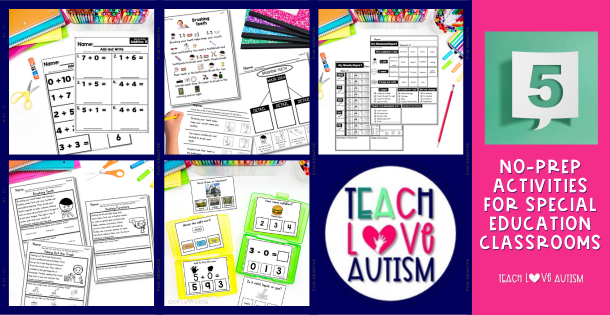
Are you looking for no-prep worksheet activities to ease back in? Returning to school after a break—whether it’s winter, summer, spring, or even a long weekend—can be a challenging transition for both students and teachers. Having a few no-prep worksheet activities ready to go can make all the difference in easing back into the routine. I’m always telling my followers on Instagram that they need to keep it simple when coming back from a break.
These worksheets are perfect for helping students re-establish focus while also allowing teachers to get back into their classroom rhythm without extra prep time.
Here are five no-prep worksheet activities to help your classroom get back on track after any break:
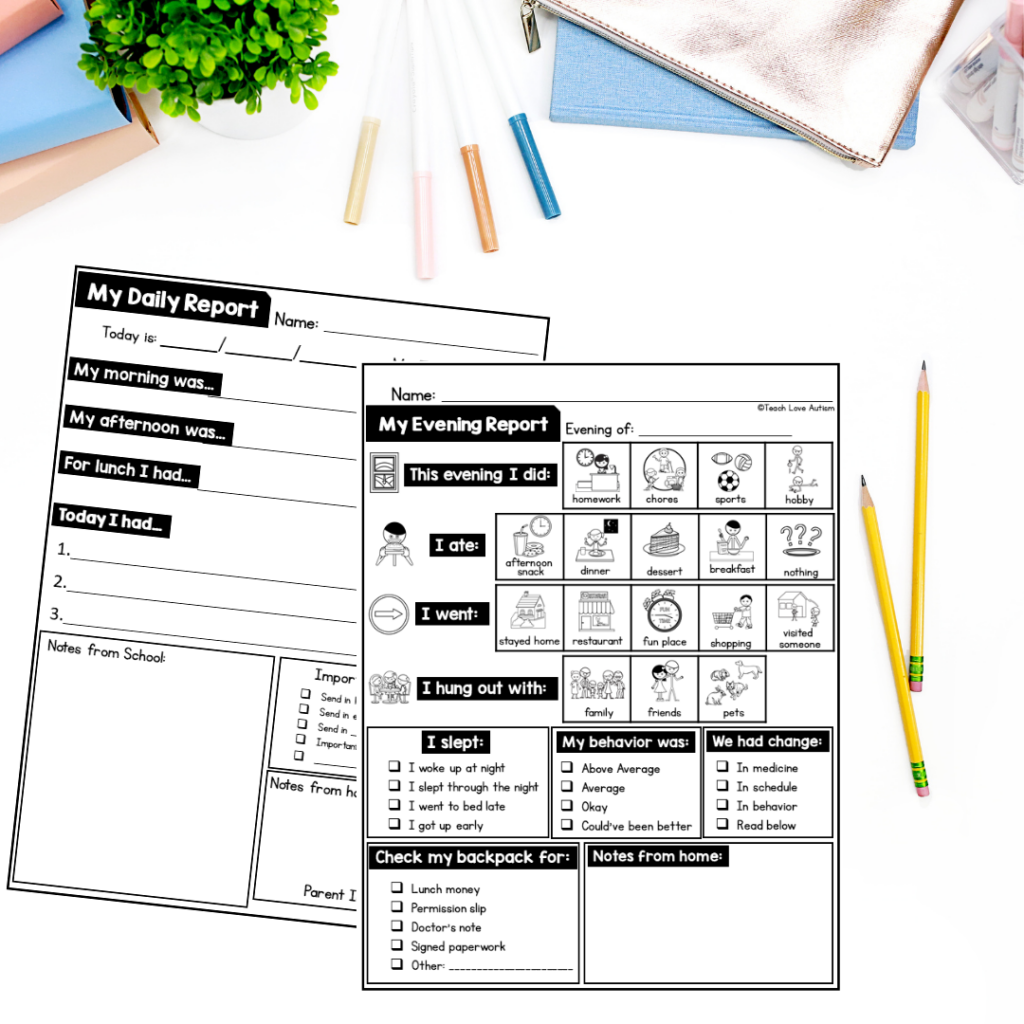
Re-establishing communication with families is a great way to start fresh after a break, fostering a sense of partnership in a child’s education. These editable logs are no-prep worksheet activities that provide an easy way to document and share student progress, behaviors, and activities with parents—ensuring continued collaboration.
By maintaining open lines of communication, educators can offer valuable insights into a student’s daily experiences, helping parents understand their child’s strengths and areas for improvement. Furthermore, these logs can become a vital part of parent-teacher interactions, as they encourage meaningful discussions and feedback, ultimately contributing to a supportive environment that promotes academic success and emotional well-being.
These logs help set the tone for a successful, collaborative second half of the term, keeping everyone on the same page.
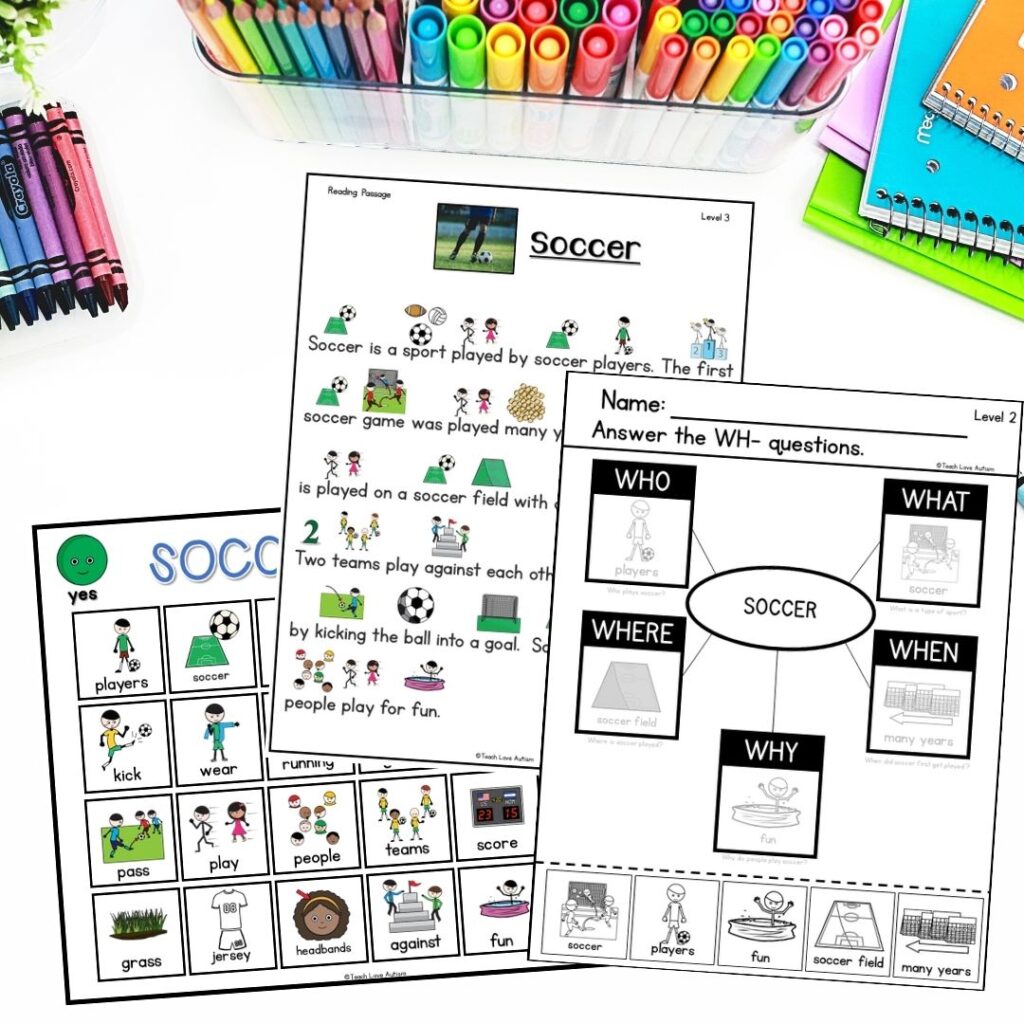
Help students ease back into their reading routine with leveled reading comprehension passages that include visual aids such as charts, images, and infographics. These no-prep worksheet activities are perfect for students with varying abilities, making it easy to differentiate instruction for diverse learners; they cater to different learning styles, such as auditory and kinesthetic, thereby enhancing engagement and understanding.
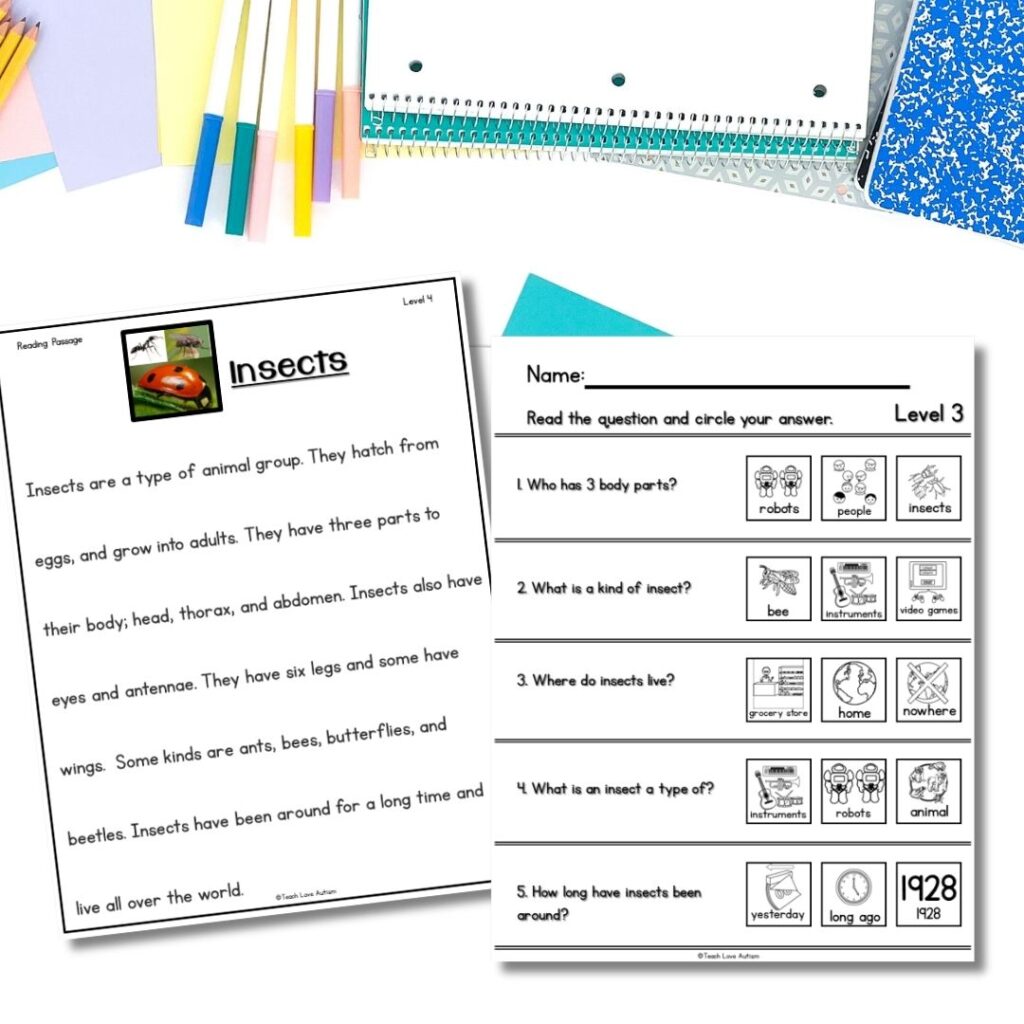
Additionally, the inclusion of varied text lengths and complexity levels allows teachers to tailor activities based on each student’s individual needs, supporting both struggling readers and advanced learners in their journeys toward literacy. With these thoughtfully designed materials, educators can foster a supportive environment that encourages confidence and a love for reading.
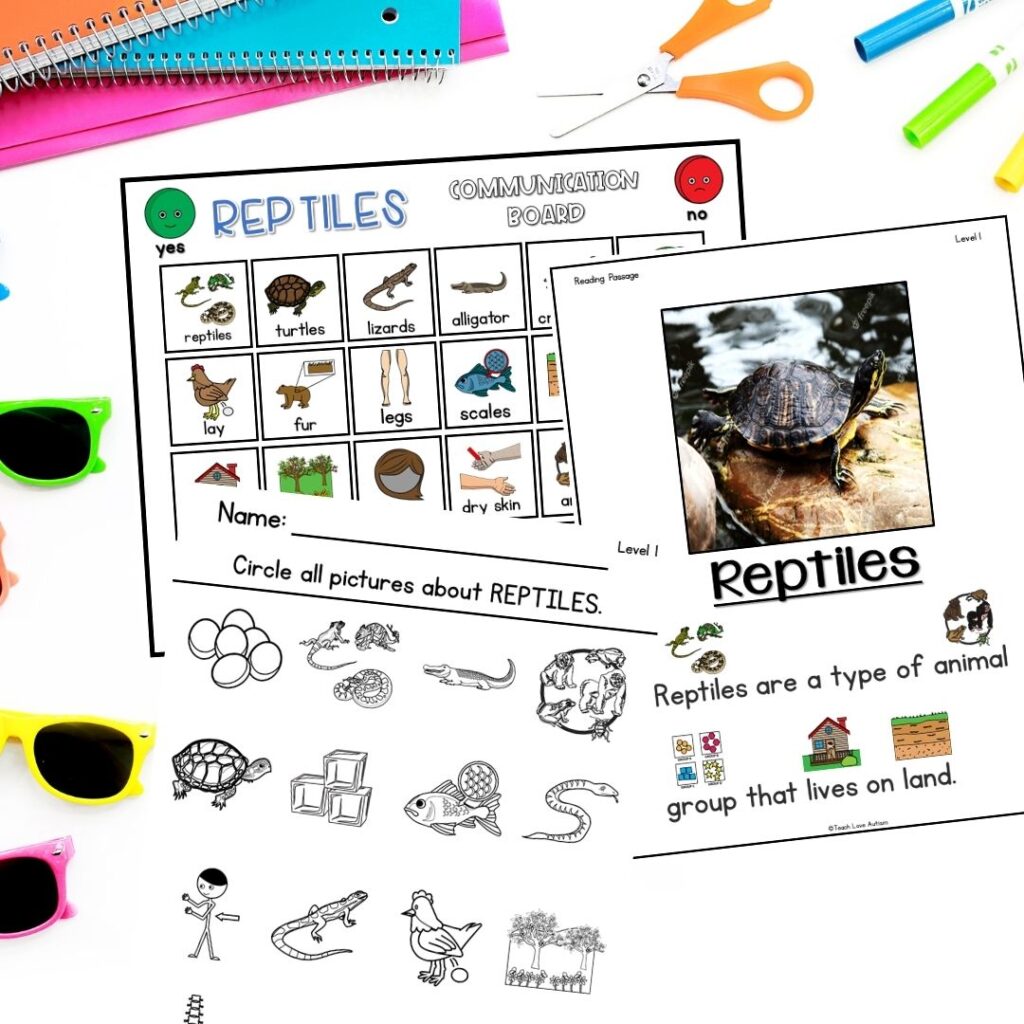
These passages can be incorporated into your reading sessions to reinforce comprehension skills while providing a meaningful learning experience for students of various reading levels. By introducing varied topics and engaging narratives, educators can foster a positive and interactive learning environment that keeps students motivated and eager to learn. Furthermore, utilizing these resources not only enhances reading fluency but also promotes critical thinking and discussion among peers.
After a break, it’s important to revisit practical skills, such as counting coins and bills. These no-prep worksheet activities help students practice money concepts and reinforce addition skills in a real-world context.

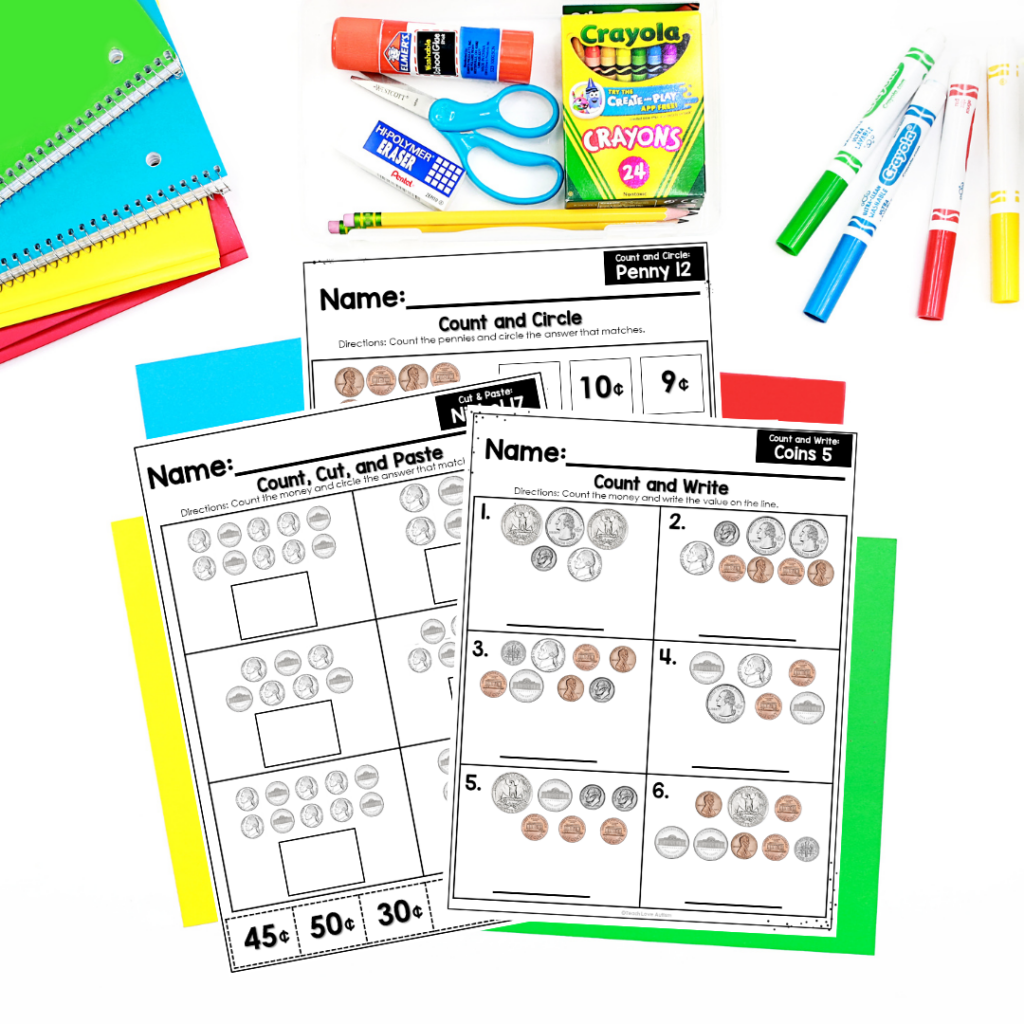
These worksheets can be used in math centers, as independent practice, or even as an assessment tool to help students build confidence with financial literacy.
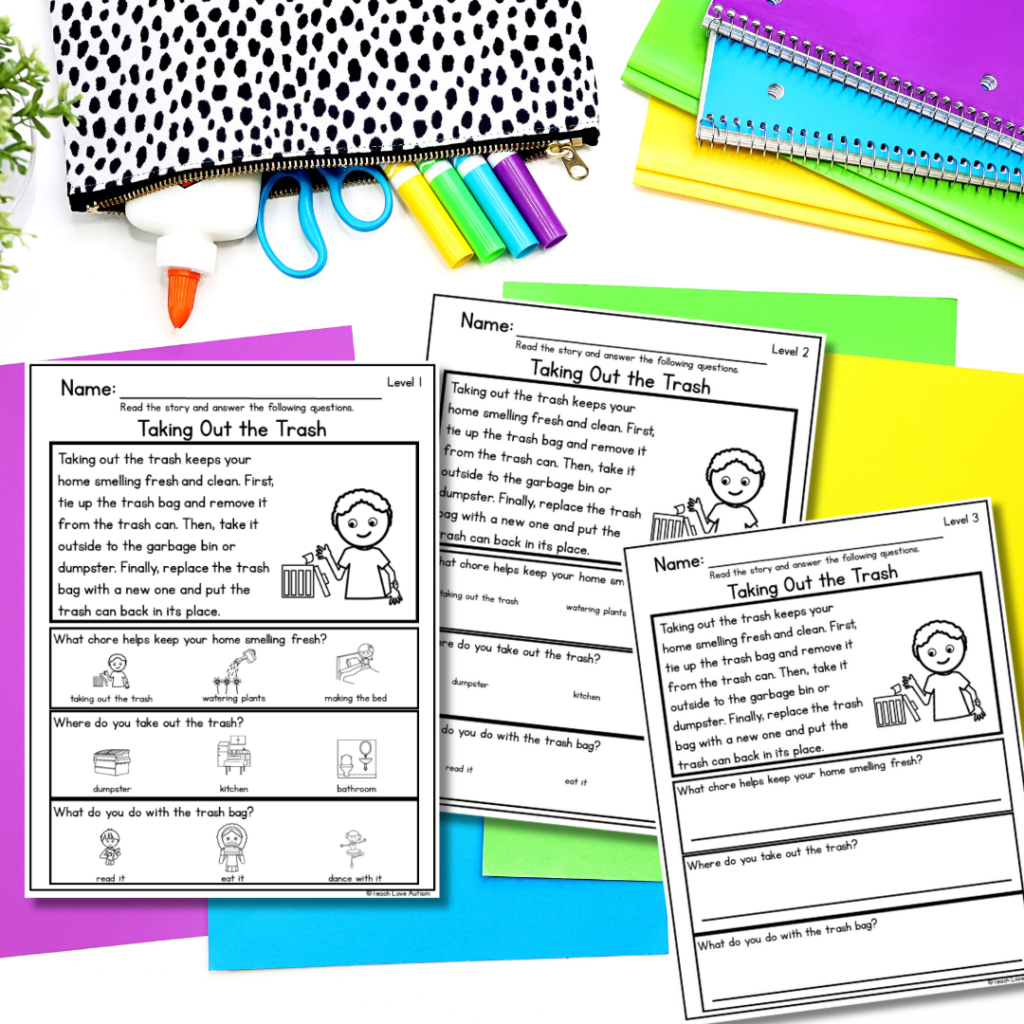
Reinforce essential life skills with reading comprehension passages that focus on real-world scenarios. These activities encourage students to connect their learning to daily life, improving both their functional literacy and critical thinking skills.
Incorporating these passages into your lessons can engage students in meaningful, hands-on learning that aligns with their future needs, fostering critical thinking and problem-solving skills essential for navigating an increasingly complex world. By bridging theory with practical applications, educators can create an interactive environment where students are encouraged to explore concepts deeply, collaborate with their peers, and relate what they learn to real-life situations. This approach not only enhances retention and understanding but also motivates students to take ownership of their education, preparing them for the challenges and opportunities they will encounter beyond the classroom.
These are not technically no-prep worksheet activities, but I am here to show you why they are versatile tasks perfect for re-engaging students after any break. Offering activities across reading, math, science, and social studies, they allow teachers to cover a variety of subjects while keeping students focused and motivated.
Why it works:
These task cards are great for independent work, small groups, or center activities, providing a range of engaging exercises across different content areas.


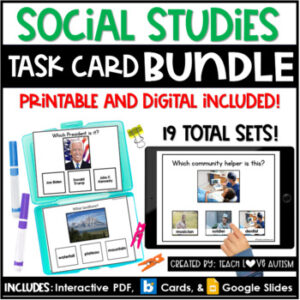

The return to school after any break doesn’t have to be overwhelming. With the right resources, you can help students transition smoothly while minimizing your own prep time. These no-prep worksheet activities are designed to re-engage students and reinforce key skills, so you can get back into your routine quickly and confidently. Explore these resources in my store to support your classroom needs and ensure a successful start after any break.
And if you are looking for a consistent way to get resources every single month, take a look at the Teach Love Resource Membership!
The Teach Love Resource Membership is a time-saving, all-in-one solution designed specifically for special education teachers. With monthly access to exclusive, high-quality digital resources—such as worksheets, task cards, and life skills activities—you can easily plan engaging, effective lessons without the prep work. Our membership helps you save hours each week, reduces stress, and provides tools that are adaptable to a variety of student needs.
Join today and unlock the support you need to create an organized, thriving classroom where all students succeed. And if you are looking for more support you can always join the Teach Love Autism Community on Facebook!
The post 5 No-Prep Worksheet Activities for Special Education Classrooms After a Break appeared first on Teach Love Autism.

Welcome Abby back from Mrs. Moe’s Modifications as she guest blogs all about techniques for smoother transitions in the classroom! Check out her full blog here. This is a part 2 from the previous blog I shared where Abby gave some perfect ideas to support students in smoother transitions in the classroom.
A transition object is like a little “bridge” that helps students move from one activity to the next. Think of it as a small, familiar item they can hold onto as they move through different parts of the day. For example, a favorite stuffed animal, a special fidget, or even a “transition buddy” like a tiny toy car can give students something comforting to focus on, especially during tougher transitions.
Kids often feel a little more at ease when they can bring something familiar along for the ride, kind of like adults might with that morning coffee or a trusty planner! Transition objects can make even the most dreaded switch—from preferred activities to a more structured one—a little easier because they provide a sense of security. As they hold their special item, they feel more prepared to face whatever’s next.

Keep it simple and consistent by using the same object for specific transitions or allowing them to pick from a small, familiar selection. Over time, they’ll start associating that object with smooth transitions and, hopefully, with fewer worries along the way!
Tips for transition objects:
Once students do the transition- we need to reinforce that behavior for it to happen again in the future. Pairing transitions with a reinforcement system—like earning tokens, stickers, or points for completing tasks—can help make moving from one activity to the next more rewarding. Think of it as a way to celebrate those small wins, like getting through math time or wrapping up circle time without a hitch. It does not mean that for every single transition they need to earn a prize, but rather using the reward system they already have in place.
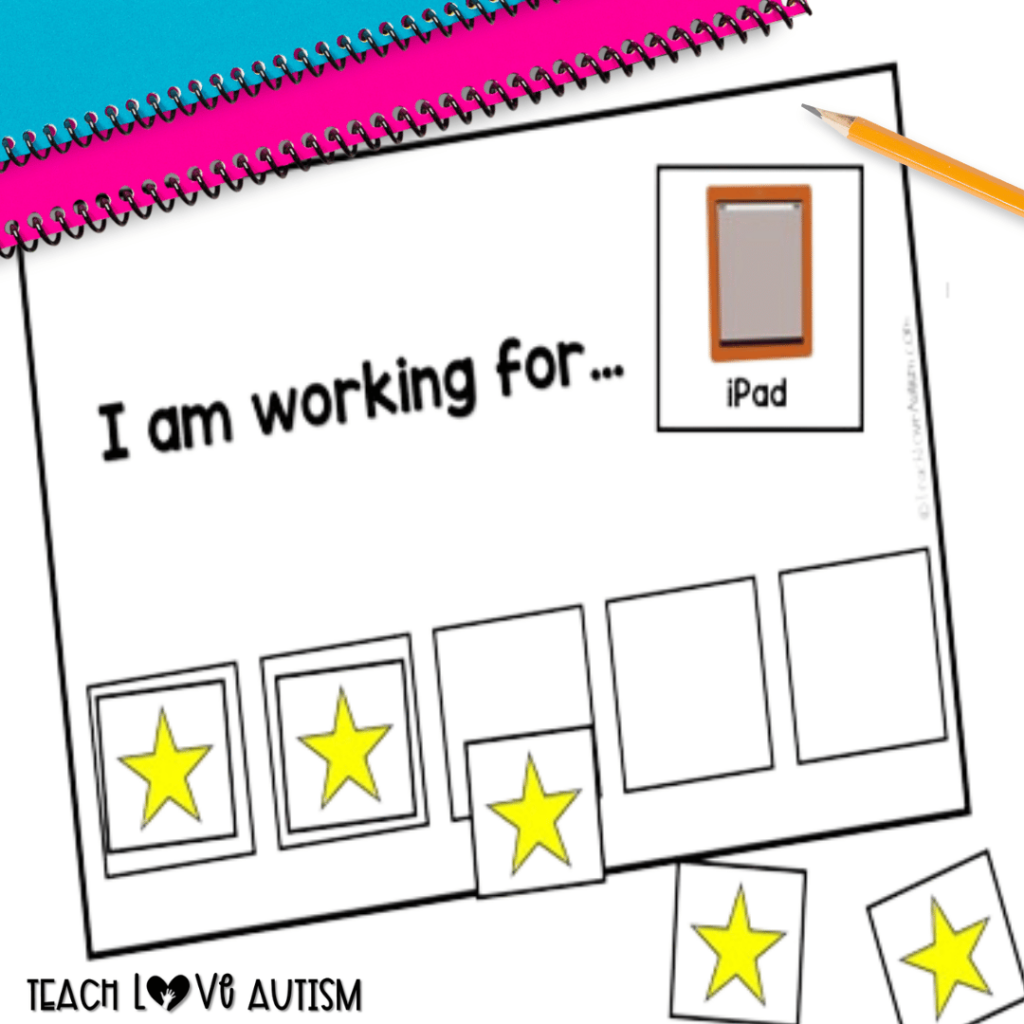
If you have a student who is using something like a token economy this would be useful to you for each major transition. Then for the transition times, they can earn an additional token. This will again motivate them to have successful transitions.
Or if you have a student on a token economy, they can earn a token for each transition that will be working towards their reward.
Here is a blog about using breaks and reinforcement in the classroom.
Giving kids a little “wait time” during transitions can be an easy trick for a smoother transition in the classroom. Instead of rushing them to wrap up what they’re doing, allow a few seconds (or minutes, if possible) to mentally shift gears. Imagine someone interrupting your favorite show without warning—no one loves an abrupt stop! For kids, a little wait time can help them adjust and get ready for what’s next without feeling like they’re being yanked away mid-task. You want to be sure you give them enough time to process, finish their task, and make the transition.

You can also use wait time in a different way- to avoid getting into a power struggle. Continue to prepare the student for the transition, but then when it is time to do the transition, tell them once. Then just wait.
Do not constantly remind them of the expectation. Many times students need wait time to just process the verbal information and will be ready to go in just a few short moments. Students may have a hard time processing the directive or with the attention shift and just need time to work through it. Although we was adults feel as though we need to constantly be moving through our school day with how much we have to get through, giving a couple of moments will actually give you more time back because you won’t be dealing with problem behaviors!
Social narratives, or social stories, are like little stories that help students understand what’s going to happen and how they can handle it. These short, simple stories explain transitions step-by-step, helping kids picture what to expect and how to act. They are perfect for having smoother transitions in the classroom. Imagine being told you’re going somewhere new without any details—that could be a bit nerve-wracking! Social narratives give kids the information they need so there are fewer surprises.
You can create a social story for almost any transition, like going from playtime to clean-up or moving from one class to another.
Behavioral momentum is all about building success before tackling bigger challenges. Starting with easier tasks can help students feel confident and ready to take on whatever comes next. By beginning with activities they can be successful at, it can build up the momentum so they are less likely to refuse the transition. These can be thought of as transition activities even.
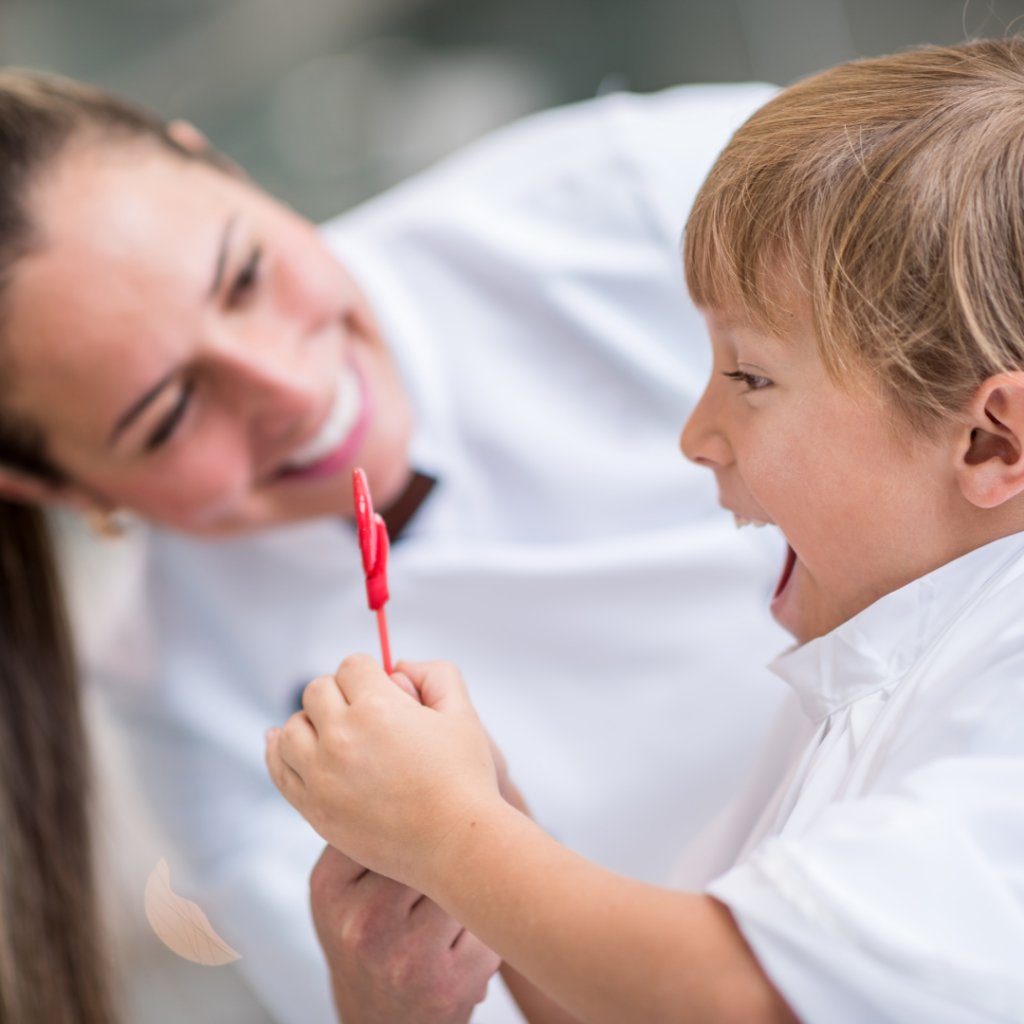
Transitions can cause challenging behaviors for some students, especially those with autism, but with a little creativity and planning, we can make these shifts smoother and more manageable. By implementing strategies like using a pause button, visual schedules and social narratives, we empower our students to embrace change rather than resist it. These are effective ways to be proactive about behaviors to intervene before they begin. Remember, the goal isn’t to make transitions happen overnight; it’s about building habits and routines that lead to lasting success. Your specific situation may not need all of these strategies, but it is good to have several in your back pocket for when you are trying to support a student through their transition.
As you explore these strategies, keep in mind that patience and reinforcement are key. Each small step forward is a victory worth celebrating! Whether your students are transitioning from one activity to another or adjusting to a new routine, the right tools and a supportive environment can make all the difference.
The post 5 MORE Techniques for Smoother Transitions in the Classroom appeared first on Teach Love Autism.

Welcome Abby from Mrs. Moe’s Modifications as she guest blogs all about strategies for smoother transitions in the classroom! Check out her full blog here.
Transitions can be tough for many students, especially those with Autism, who may struggle with unexpected changes or shifting from one activity to another. Whether it’s moving from recess to classroom time or switching from one task to the next, these moments can lead to frustration, anxiety, and behavioral challenges. However, the good news is that there are simple, effective strategies for smoother transitions.
While this post is geared towards supporting students with autism spectrum disorder, these strategies are beneficial for all students, regardless of diagnosis. Every child can benefit from more structure, predictability, and reinforcement during transitions. By implementing these techniques, you can create smoother, more manageable transitions for your classroom or at home, leading to a more successful and calm learning environment. Let’s dive into 10 strategies that can make a big difference!
Introducing a physical pause button symbol, like a laminated card or sign, can be a powerful tool for strategies for smoother transitions. The pause button signals to students that the current activity isn’t finished forever—it’s just a temporary stop before moving on to the next task. This can reduce anxiety by reassuring them that they may return to the activity later if needed.

Since many kids are already familiar with the concept of pausing from watching videos or playing video games, this strategy will feel relatable and easy to understand. To make it even more effective, practice using the pause button during both calm times and more challenging transitions so that it becomes a natural part of their routine.
I like it print out a larger pause button and I will place it onto the work or activity that it being done. It is important that when you first introduce this it is not when it is actually time to pause and transition. It is important that the expectations are reviewed prior to it. But I will say that students have picked up on this very fast. If it is a toy or game, consider leaving the pause button on it and physically keeping it there until it is time to play again. This can really solidify the meaning of the pause button and show them that they will get to do it again!
Offering choices during transitions gives students a sense of control, which can ease their anxiety and resistance. For example, you might ask, “Would you like to walk or hop to the next activity?” “Would you like 2 or 3 more minutes on this worksheet?” or “Do you want to walk with me or your friends?”

By allowing them to make small decisions, you’re empowering them to take ownership of the transition and making it feel less overwhelming.This is one of the strategies for smoother transitions that is crucial to use. It’s important, though, to keep these choices structured and manageable to avoid overwhelming them with too many options.
The choices should still be getting them closer to the desired outcome. For example, asking them if they want to walk like a penguin or elephant both get them walking in the direction you want them to go.
Choices should like an easy intervention, but many times they can lead to power struggles. In order to avoid a power struggle, read this blog post that outlines them even more.
Using visual timers are tools that works for all students, so it is a tool that can be used in every classroom- no matter the age! Timers can help students in high school with time management so they are not asked to transition right in the middle of a project. Timers such as countdown clocks or sand timers make the concept of time more concrete for younger students who may struggle with abstract time cues.

As the countdown timer winds down, students gain a clear sense of when the transition will happen, reducing the surprise or anxiety of switching tasks. Give gentle reminders as the timer approaches zero—like saying, “Two more minutes before we clean up”—so they know what to expect. Pairing the timer with positive reinforcement when students respond appropriately, such as, “You stopped right when the timer went off—great listening!” can further encourage smoother transitions.
Even using a timer to help students learn the skill of waiting and is one of the many strategies for smoother transitions that works. This is something that can be so hard for our students because it is an abstract concept. And it is even harder for adults! Usually, adults wait and then talk on their phones or make small talk with people around them. In classrooms, students are often asked to wait before they transition. Using a timer or another type of visual support like this can help students understand the concept of time and then make the transition easier.
Here are a few of my favorite types of timers:
Teaching students the skill of learning to wait is a skill that is going to help them in their daily life, not just in school.
Many times autistic children will not be able to process the verbal cues you provide to them, so this visual cue can help with the transition process and make many daily routines easier.
A First-Then board is a straightforward visual tool that helps students anticipate what’s coming next. It is easy to implement and use and can be used with just a whiteboard! For instance, you might show the student, “first worksheet, then outside.” This clear format reassures students about what’s happening now and what to expect next, reducing the anxiety often associated with transitions. The beauty of the first-then board is its versatility; it can be used repeatedly throughout the day, not just during difficult transitions or when a student is showing signs of problem behavior. For example, you can use it when moving between subjects, from one classroom to another, or even during breaks.
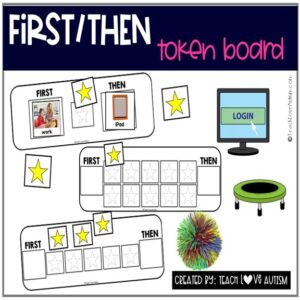
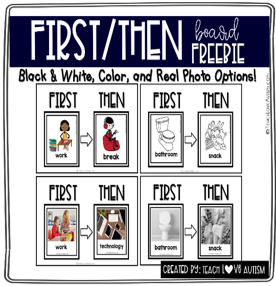
By incorporating the First-Then board as a regular part of the daily routine, students can start to rely on its structure and predictability, which builds comfort and confidence over time. Keep the board simple and easy to read, using pictures or text based on each student’s abilities. As students complete the “first” task, reinforce their accomplishment with positive reinforcement that is the “then” task. Consistent use throughout the day helps students feel more secure with transitions, making them less intimidating and more routine.
These can even be effective tools in helping students transition off of a preferred activity. You can use the first- then board to show that once they do their math, they can then return back to watching their video. First math, then video. This can make getting off the video to actually do math a tad easier.

All team members must be using this language and using the if-then in the same way. The best way is to do the work then the reward, but this can be tweaked for specific needs. Some students just need to know what is coming so they may be okay with hearing first math then writing.
Visual schedules are powerful tools for helping students navigate their day by showing them exactly what to expect. By laying out each activity in order, a visual schedule allows students to see what’s coming next, reducing the uncertainty that often causes resistance to transitions. The schedule can be customized to the student’s needs and preferences—some may benefit from picture icons, while others might prefer text. Be sure to give the schedule type that the student can access (or understand) even when they are upset. This means if a student is just learning to read, they need pictures and not just text.

Using a visual schedule consistently throughout the day helps students feel more secure as they can check off each activity as they go, giving them a sense of accomplishment and progress. It can help students prepare for an upcoming transition by seeing what follows it.
This structure is especially useful for students who rely on predictability; knowing what’s next can significantly ease transitions. If there is a change, having it on the students’ schedule can help with the change as opposed to just verbally telling them. The students learn they can rely on their schedule, and even if it is different day to day what is on it is what will happen for that day.
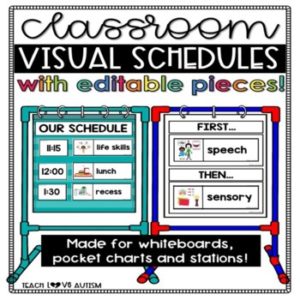
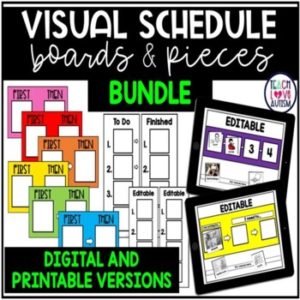
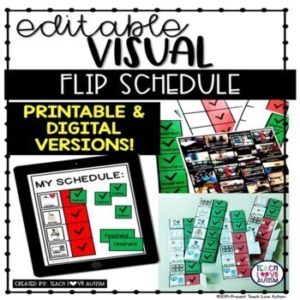
Regularly referring to the schedule helps reinforce its purpose, and over time, students may even begin using it independently. By establishing the schedule as a routine part of their day, you’re building a supportive framework that guides students smoothly from one activity to the next. Learn more about visual schedules over on this blog here.
Love these strategies? But still, wishing there were more ideas? Check out part 2 of this blog with 5 More Strategies for Smoother Transitions in the Classroom.
The post 5 Strategies for Smoother Transitions in the Classroom appeared first on Teach Love Autism.
We aim to create meaningful stories, pictures, and expressions through art and devices, using new technology and AI. Our ultimate goal is to better enable those with special needs through our innovative products and services.
